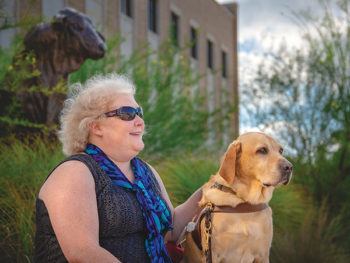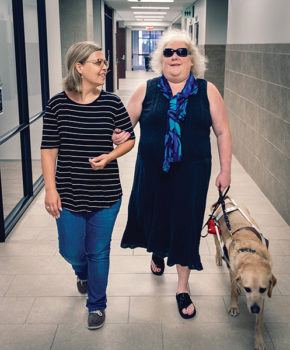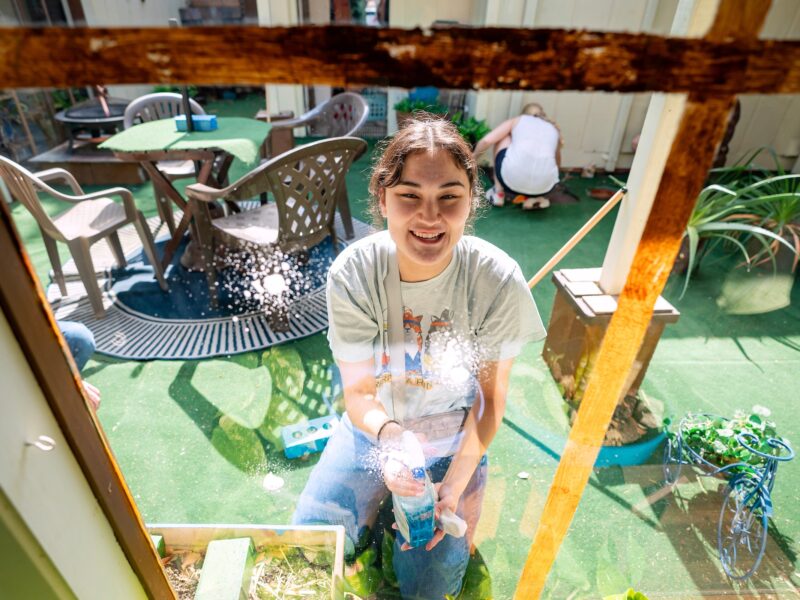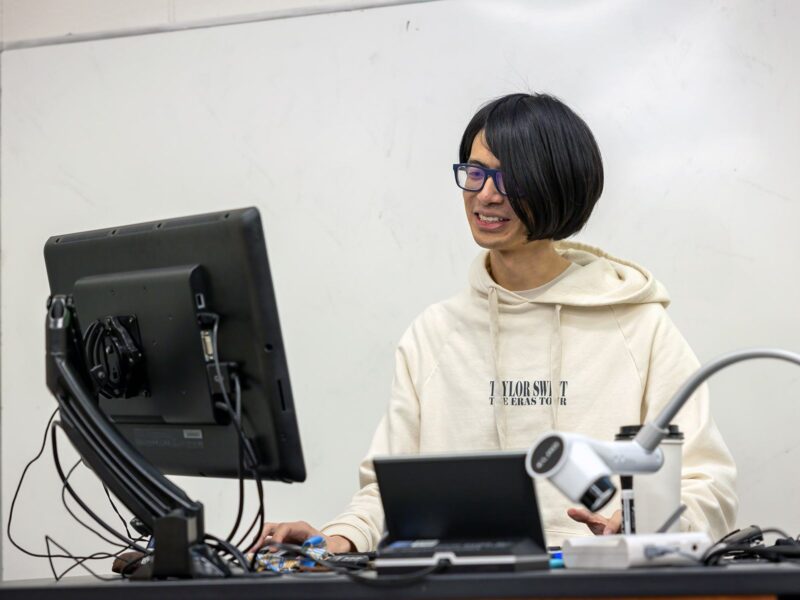Accessible Academics

Technology has become a crucial part of veterinary medicine education, and ensuring that all students — including those with visual, auditory, motor or cognitive disabilities — can easily navigate required software, applications and other online materials is equally as important.
This concept, known as digital accessibility, is an essential component of the overall higher education student experience because nearly every aspect of academic life now leverages digital or web-based tools and applications. The Center for Educational Technologies (CET), housed within the Texas A&M College of Veterinary Medicine & Biomedical Sciences (CVM), is recognized as a trailblazing advocate for incorporating accessibility within the framework of curriculum development.
While many of today’s current technology tools have the ability to check for accessibility (which can include tagging pictures loaded onto a website and even sentence length), they fail to offer the vital feedback the CET views as most important to true accessibility — the learner experience.
To gain a true glimpse into how all types of learners interact with the CVM’s online courses and materials, the CET sought a fresh perspective from a learner who relies on assistive technologies to navigate digital content.
In June 2017, Laura Ann Grymes, a member of the local community who is blind, joined the CET as a program aide to assist the team in ensuring materials produced by the center meet both Americans with Disabilities Act (ADA) standards and support the learner in gaining new knowledge.
“Laura Ann is an invaluable member of our team,” said Molly Gonzales, CET instructional assistant professor. “Watching her interact with the content we have created and listening to her share her experience is humbling and insightful. Our partnership with Laura Ann was the catalyst that changed our perspective on how we develop new digital learning tools and experiences.”
The CET and Grymes partnered to further enhance the center’s StepStone online authoring tool by transforming it into a fully ADA-compliant web-based platform. StepStone allows educators to produce interactive, media-enriched learning resources that can be accessed from any internet-enabled device.
“Addressing accessibility is an issue shared by all who rely on digital content,” said Tim Ponder, CET instructional technologist. “Beyond the legal considerations, digital accessibility is a component of good design and delivery, potentially enhancing all users’ educational experiences.”

Grymes collaborated with Ponder and Dan Shuta, CET multimedia developer and the brain behind StepStone, to discuss best practices in accessibility and share some of the most common challenges faced by learners with differing levels of abilities in an online environment.
“Working with the CET and the CVM has been a gratifying experience,” Grymes said. “It is rewarding to be part of a team passionate about making materials accessible for learning and who are actively working to remove challenges to help students grow and learn efficiently.”
As a result of Grymes’ collaboration with the CET, now both authors and end users can experience the benefits of a fully ADA-compliant authoring platform.
Content-building authors can incorporate ADA components directly within StepStone by placing alternative text and long descriptions on images, while end users have the ability to use keyboard shortcuts or spoken instructions via a screen reader to navigate the course.
Many CVM faculty members use StepStone to build online case studies in which students make decisions on how to proceed through a clinical case from the patient’s admission to discharge.
These case studies have provided future veterinarians with a safe space to practice their critical thinking skills using real-world scenarios based upon former Texas A&M Veterinary Medical Teaching Hospital (VMTH) patients.
Grymes continues to play a pivotal role in ensuring that StepStone generates accessible content for all learners. She has performed quality assurance testing on several of the StepStone modules and often offers suggestions for how to improve the student learning experience.
“Laura Ann has taught us how to view online learning through a new lens, one that goes beyond the initial assurance that the content and resources are accessible to also consider the language and descriptions we use within our writing,” Gonzales said. “Am I painting the appropriate picture with the words that I am using? Or is my lack of clarity a potential barrier to someone’s learning? She has really opened our eyes to give careful consideration to the details that really bring the whole picture together.”
Grymes is looking forward to continued work with the CET and increasing awareness of accessibility considerations in digital environments.
“True accessibility is way more than just checking off a box to say it’s accessible,” Grymes said. “I love that this team has high standards and makes teaching modules accessible for all learners.”
Through collaborations with partners like Grymes, the CET and CVM will continue to blaze the trail for integrating accessibility within academics and the campus culture.
This article by Michelle Wiederhold originally appeared on the College of Veterinary Medicine & Biomedical Sciences website.





